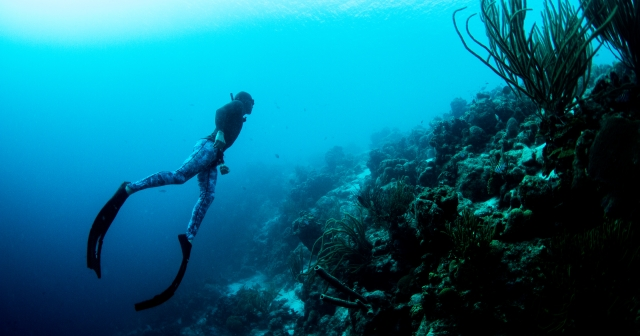Proper Use of O2/CO2 Tolerance Tables
by FII - May 05th
The purpose of a majority of our breathing exercises is to condition the respiratory muscles for better functionality in freediving. The goals of the CO2 and O2 tolerance tables are to increase the tolerance to and comfort with high levels of CO2 and low levels of O2 in our system, the very same conditions that we will be experiencing during our freedives.
The exercise consists of a set of eight short breath holds with a limited time for recovery between them. The schedule can be found in the Appendix A of your F.I.I. Level 2 Freediver manual. If you are not F.I.I. Level 2 Freediver certified and therefore you do not have access to this manual, you can try some of the CO2/O2 apps available online, such as STAmina. The schedule will most likely look different and I cannot speak for the effectiveness as I have always used only the F.I.I. tables. For the same reason I would recommend to follow whatever the author suggests as a optimum frequency, difficulty and progress for best results.
In the F.I.I. schedule for this particular session you will see the breathe up time (shown as a Vent) and the breath-hold time (shown as a Static). The objective is to follow the schedule of eight breathe ups and breath holds without interruption one after another. You will notice that in the O2 tolerance table, the breathe up stays the same throughout the whole exercise, while the breath-hold time is slowly increasing. This timetable will ensure a gradual increase of the oxygen deficit over the period of your session and trigger your body’s coping mechanisms to adopt lower levels of O2. In the reverse fashion, if you look at the CO2 tolerance tables, the breath holds stay the same during the whole exercise and are somewhat short compared to the O2 tables, while the breathe up times get shorter and shorter with each repetition. Because the breath-hold times are much shorter, this timetable should not create a significant oxygen debt in your body. The short breathe up intervals, however, will not allow you to effectively clear all the carbon dioxide from your previous breath hold out of your system. As the exercise progresses, you will be retaining a higher and higher amount of CO2, allowing your body to trigger certain physiological (and psychological :-) ) changes to reset you carbon dioxide triggers (see F.I.I. Level 2 Freediver Manual - What Makes Us Breathe?).
Schedules provided in F.I.I. Level 2 Freediver manual are meant to be done as “dry land” breathing exercises; which makes them suitable for current situation. However, they can be brought into the water as long as all the rules of direct supervision and safety for static apnea are followed.
Never practice both CO2 and O2 tables on the same day. It would be counterproductive. Because you are in a sitting or lying position while doing the tolerance tables, these breathing exercises might give you the impression they are not a serious workout. Bear in mind, though, from a physiological point of view, on the cellular level, you are putting your body through very strenuous activity. Therefore, if you are in any type of regular exercise regime, opt to do the tables on days when you do not exercise. For the same reason, one or a maximum of two tolerance sessions per week would be the maximum frequency for the best effect. You can alter between performing an O2 tolerance in one session and a CO2 tolerance in the next, or you can focus on whatever is holding you back in your freediving progress. To identify your weakness compare your signs and symptoms of hypoxia and hypercapnia with your safety diver (see F.I.I. Level 2 Freediver Manual - Physiology for Level 2 Freedivers—Pressure-Related Physiological Stress), this is similar to when you try to figure out your safe number of purges (see F.I.I. Level 2 Freediver Manual - Breathing Techniques—Purging).
Train safe and have fun,
Martin Stepanek

